Lamborghini Huracan Sterrato Review: Incredible, But Not For The Reason You Think
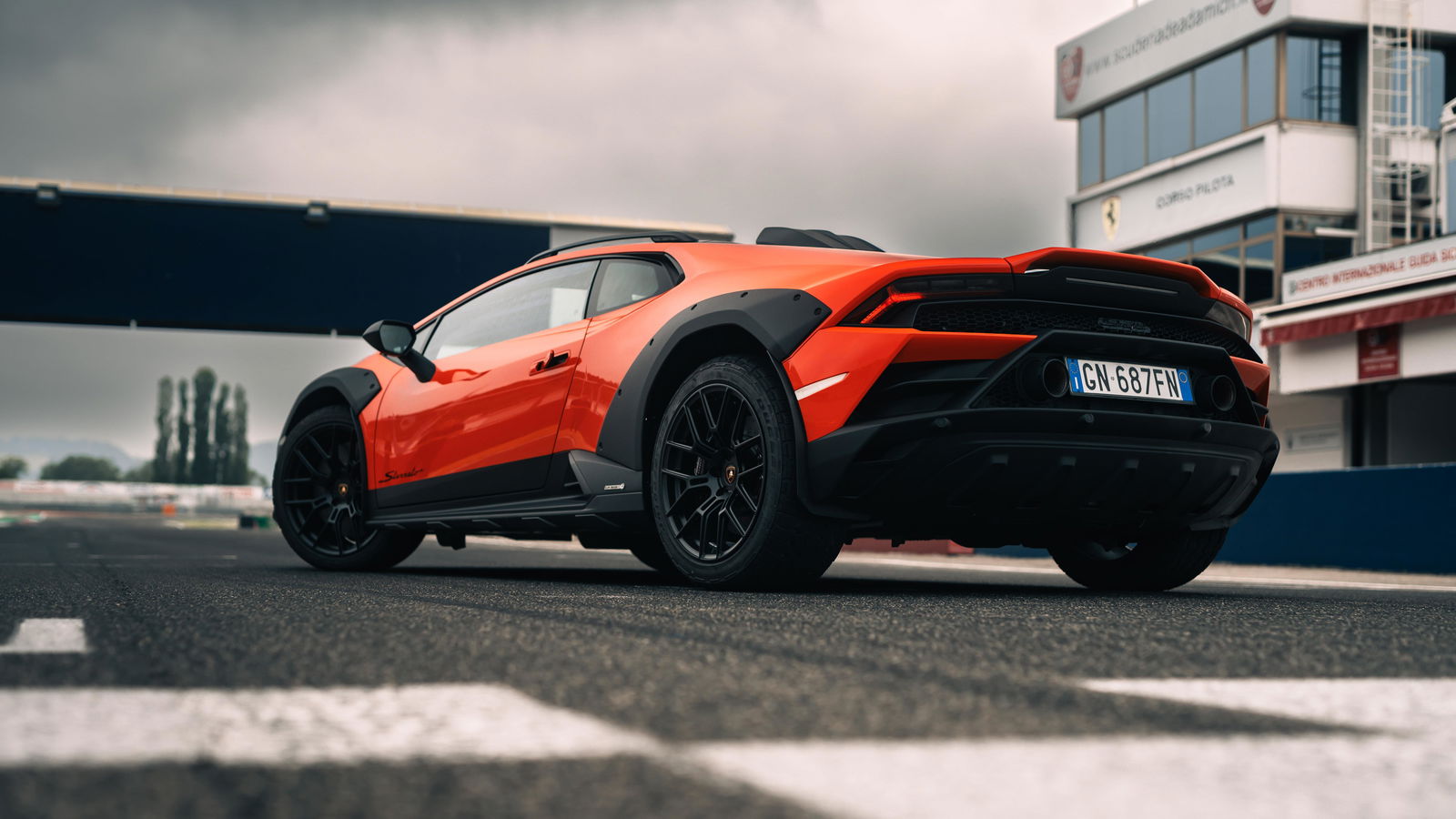
Pros
Cons
There’s a curious phenomenon in Hollywood whereby two very similar films come out at around the same time, usually by way of coincidence. Think Deep Impact and Armageddon, or perhaps White House Down and Olympus is Fallen. Just make sure you avoid both of the latter two, as each is as terrible as the other.
A similar sort of thing happened in the car world not so long ago. Both Porsche and Lamborghini decided to build a lifted supercar that can do things no such vehicle should be able to off-road, while also being blisteringly quick when on it.
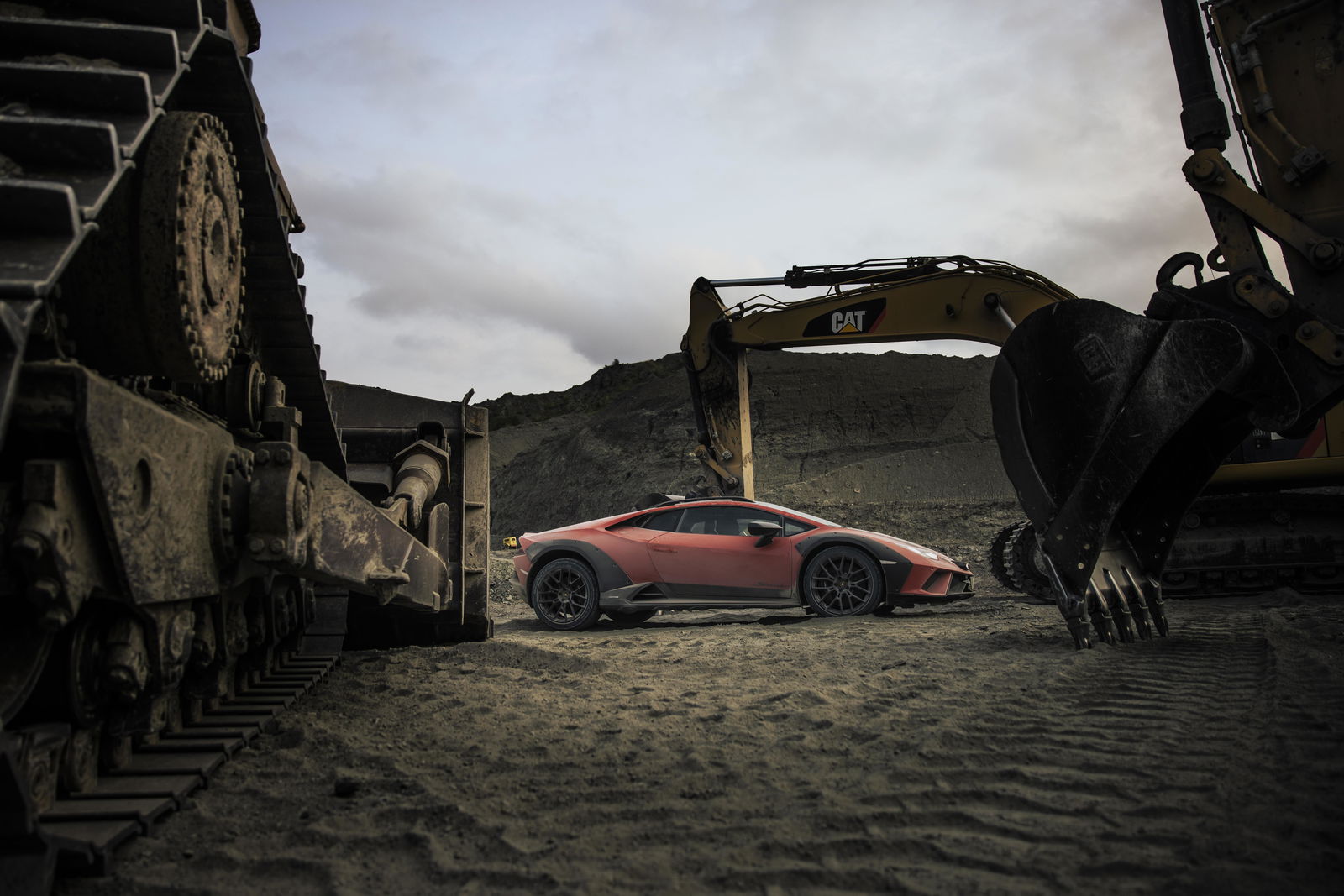
Just like those ‘twin films’ in Hollywood, though, while the concept might seem similar between these cars, the execution is very different. The Porsche – the 911 Dakar – is rear-engined, powered by a turbocharged flat-six engine and built for some pretty serious off-roading, while the Lamborghini – the Huracan Sterrato – uses a mid-mounted, naturally aspirated V10 and is made for speed over loose surfaces, but nothing much more gnarly than that.
They both seem utterly silly on paper, the Huracan perhaps the more so of the two – without the same historical provenance the Dakar enjoys, the Sterrato is especially incongruous. But to write it off as some daft toy would be a mistake, because it’s brilliant. It’s also the most surprising supercar I’ve driven, possibly ever, and not for the reasons you might think.

But before we get to that, here’s a quick rundown of the Sterrato’s genetic makeup. The 5.2-litre V10 is present and correct, but now mostly fed through a roof scoop to provide cleaner air - the uppermost side intakes on either side are now closed off. It’s also slightly detuned, producing 602bhp vs the Tecnica’s 631bhp.
The chassis gets 37mm longer-travel springs that are 25 per cent softer, while the increase in ride height is about 44mm. Enough to be noticeable, then, but if you’d somehow missed that, you’ll have certainly seen the visual changes, including chunky, grey plastic wheel-arch cladding and LED spotlights.
The final change of note is a tyre swap, with the Sterrato wearing Bridgestone Dueller ‘all-terrain’ tyres. They’re hardly balloon-like, with a relatively low profile, and the tread blocks are not actually all that chunky. This means that on the move, there isn’t the annoyingly loud tyre roar you might be expecting. In fact, as a long-distance cruiser, the Sterrato does better than any version of the Huracan we’ve yet seen.
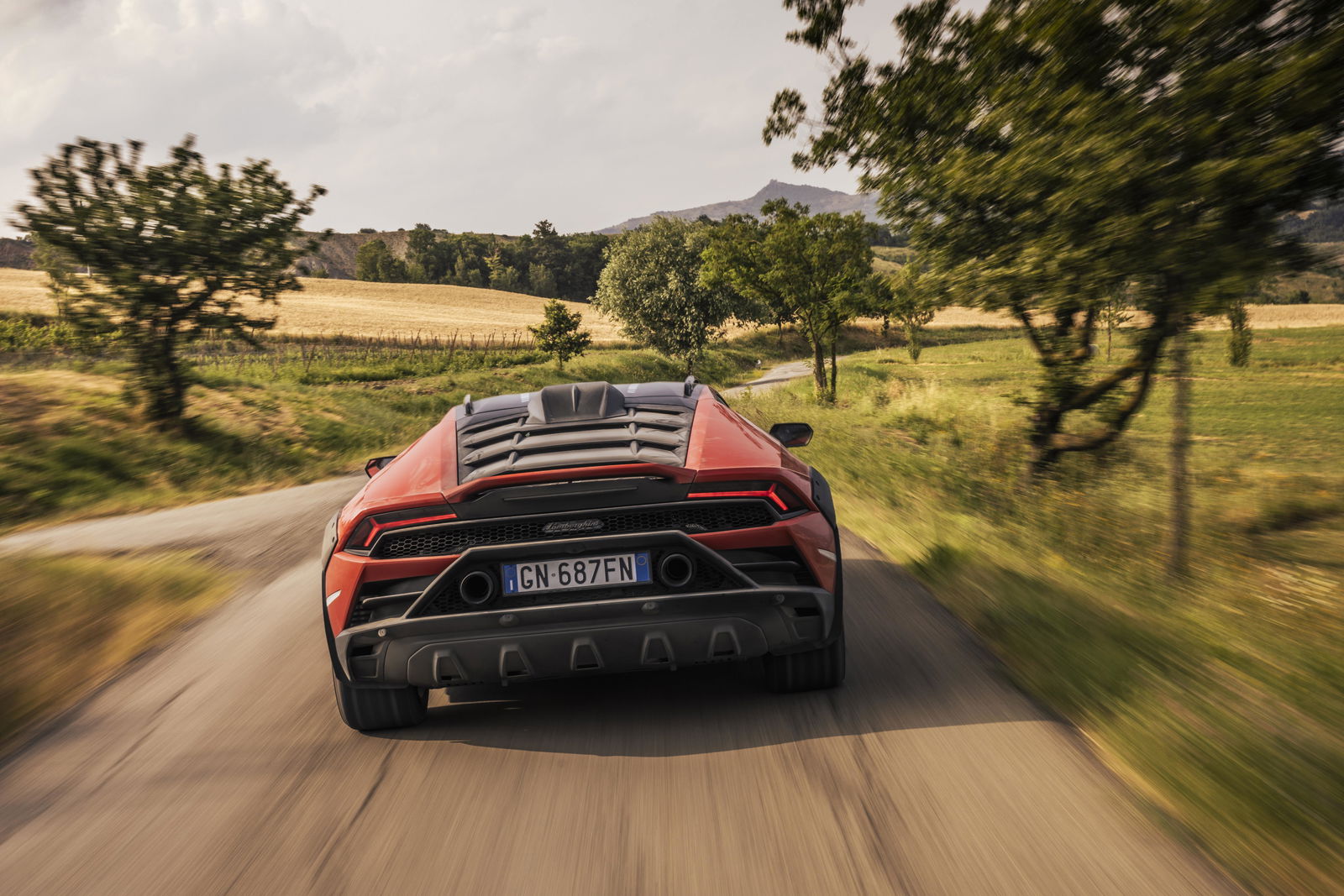
The softer springs do a far better job of soaking up imperfections in the asphalt than all other Huracan derivatives. It really is a very comfortable car to drive along a shitty road. Plus, the extra travel and the additional ground clearance means you don’t need to worry about surface quality – the crapness of British B-roads, which might see a Huracan Tecnica bouncing around and painfully bottoming out, just isn’t an issue. Point-to-point on a set of twisty roads, a Tecnica will soon lose sight of a Sterrato.
This, I suppose, is to be expected. What’s more surprising is just how accomplished the Sterrato is when you start pressing on. A stop at Autodromo di Modena feels like a box-ticking exercise to show that the car isn’t too much of a shambles on track, but as the pace builds, the Sterrato puts on one hell of a performance.
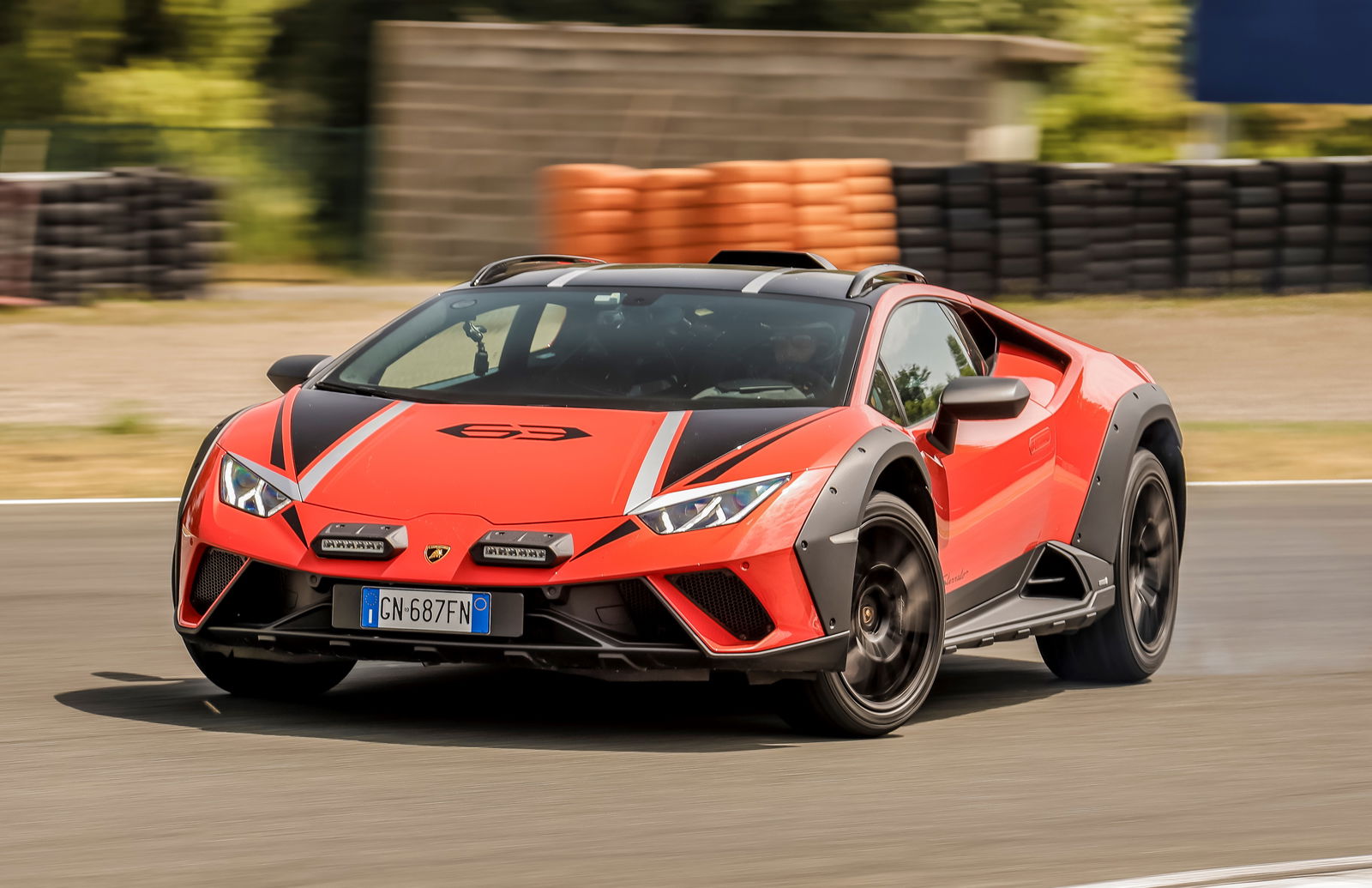
The Huracan I drove on track was the Tecnica, with an awfully serious look on my face, and ever-so-slightly clenched buttocks. But now, I’m smiling. A lot. And my cheeks are relaxed. With the softer suspension and tyres that really aren’t made for this sort of thing, the limits of adhesion are so much lower. Consequently, cornering speeds are reduced, and with an all-wheel-drive system and electronics package both tweaked with oversteer in mind, the Sterrato is hilariously keen to rotate.
This isn’t a Bambi-on-ice sort of affair, though – there’s real control to the sliding, with the Sterrato feeling balanced and utterly manageable. What helps is the Sport mode’s slackened ESC, which is happy to let the car get exceptionally out of shape, to the point where opposite lock is required, but the system is ready and waiting to step in at the point proceedings may go awry. It’s an ‘oversteer hero’ mode up there with Ferrari’s equally entertaining ‘C/T off’ setting.
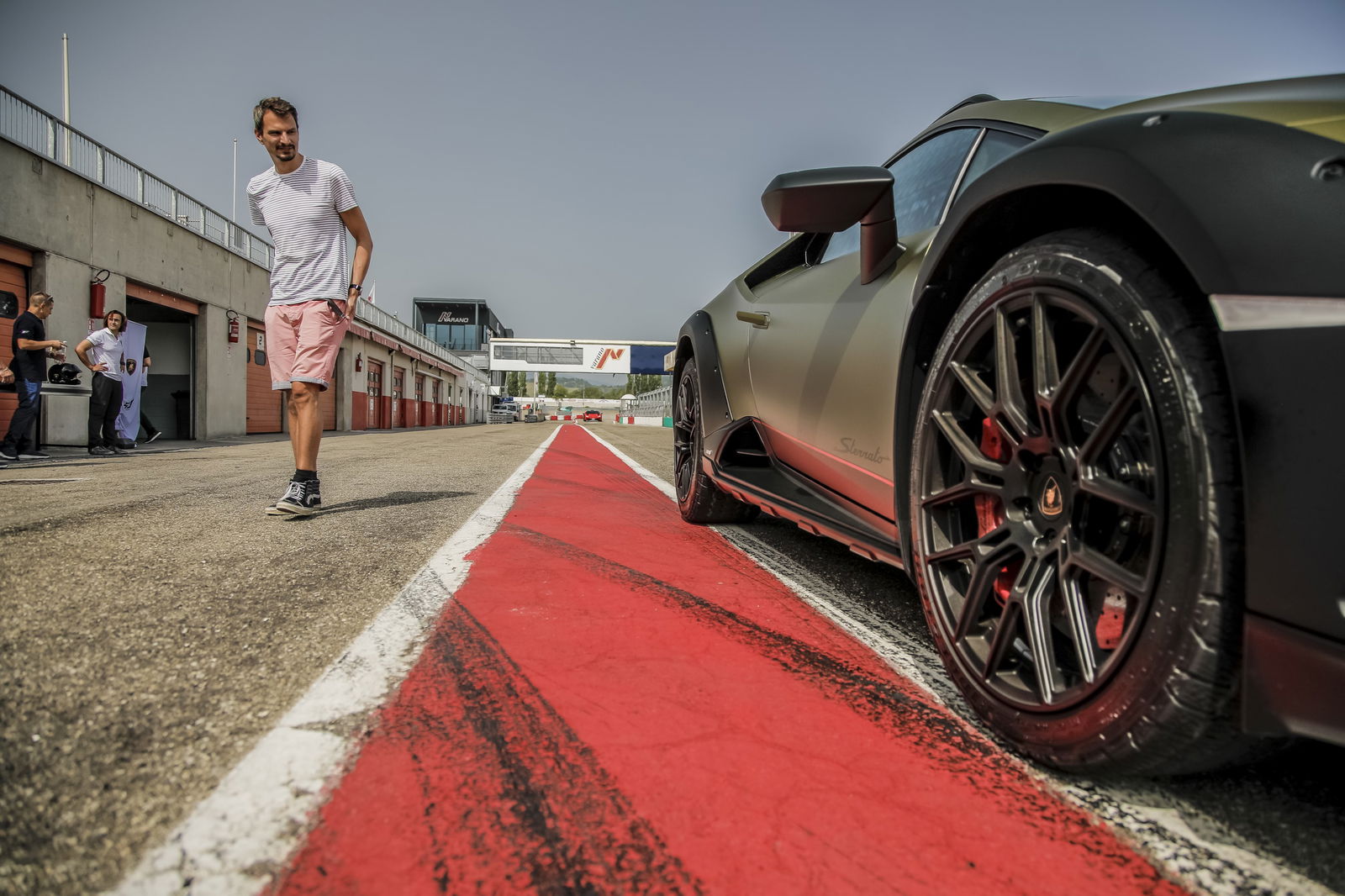
It’s important to note that the Sterrato is still mighty quick on a race track. Yes, there’s inevitably more body roll than in other Huracans, but the lean remains well-contained. Yes, corner entry speeds need to be lower than in a Tecnica to avoid understeer, but the front end is still plenty willing. And yes, you need to brake earlier, as the braking performance on those all-terrain tyres is so-so, particularly when they start to get hot after a few laps. But bear these things in mind, and you’ll be lapping very quickly, provided you can find the self-control to take every corner without deliberately doing a big skid.
Perhaps the most remarkable thing is when we return to the pits and inspect the tyres, which haven’t melted like I thought they might. In fact, they’re in very good shape after a series of fast laps and some skids for the camera.

I’d quite happily spend a whole day lapping the small but well-formed Modena track, but the other side of the Huracan Sterrato’s personality needs to be explored. And so, a short and comfortable road drive later, we’re in a quarry. An active one, at that, but Lamborghini has a small section to itself for dirt-drifting shenanigans, to avoid an awkward head-on crash with a massive rubble-carrying lorry.
Driving the Sterrato off-piste feels plain wrong if you have even an ounce of mechanical sympathy, particularly over the rougher sections of the makeshift course. As soon as you realise it can happily take the punishment, though, the Sterrato becomes riotous fun, with its Rally mode wanting to punt the back end out with minimal provocation, leaving great plumes of dust in the car’s wake. Again, it’s all extremely manageable.
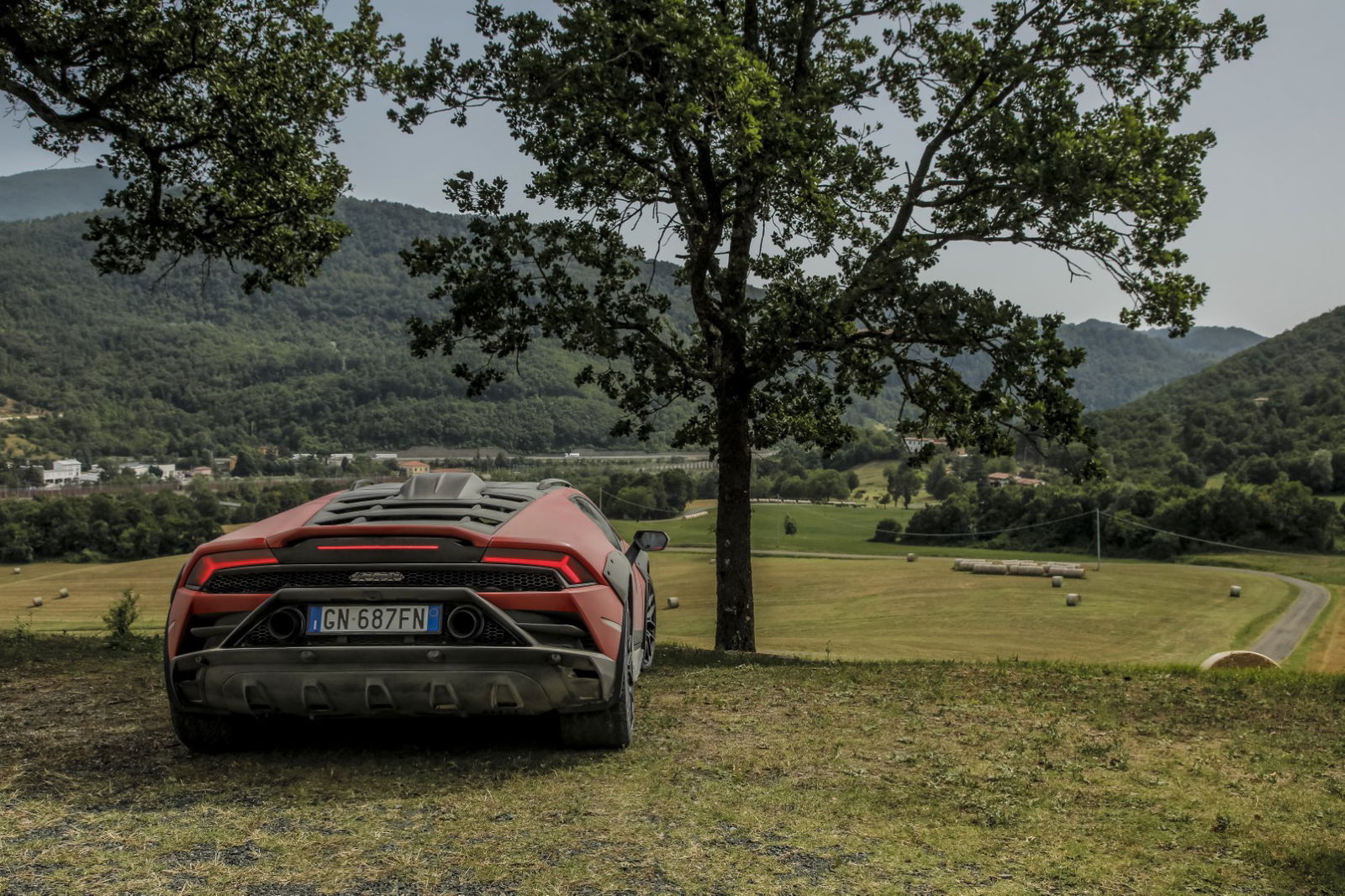
At the forefront of the experience is the engine. On low traction surfaces, with all four wheels spinning, the revs will frequently spike with an angry wail. In a nat-asp V10 with an 8,500rpm redline, it’s a true joy. What a shame it’ll be when this engine departs the motoring world.
The limits of the Sterrato’s off-Tarmac abilities aren’t hard to reach, as we find when the aluminium skidplate smashes into the ground during the final driving session. You’re not going to be joining the local Land Rover owners with their ‘one life - live it’-stickered Discoverys as they traverse deeply rutted green lanes. Which begs the question, where are you going to make the most of the Sterrato, if you don’t have a mate who owns a quarry?
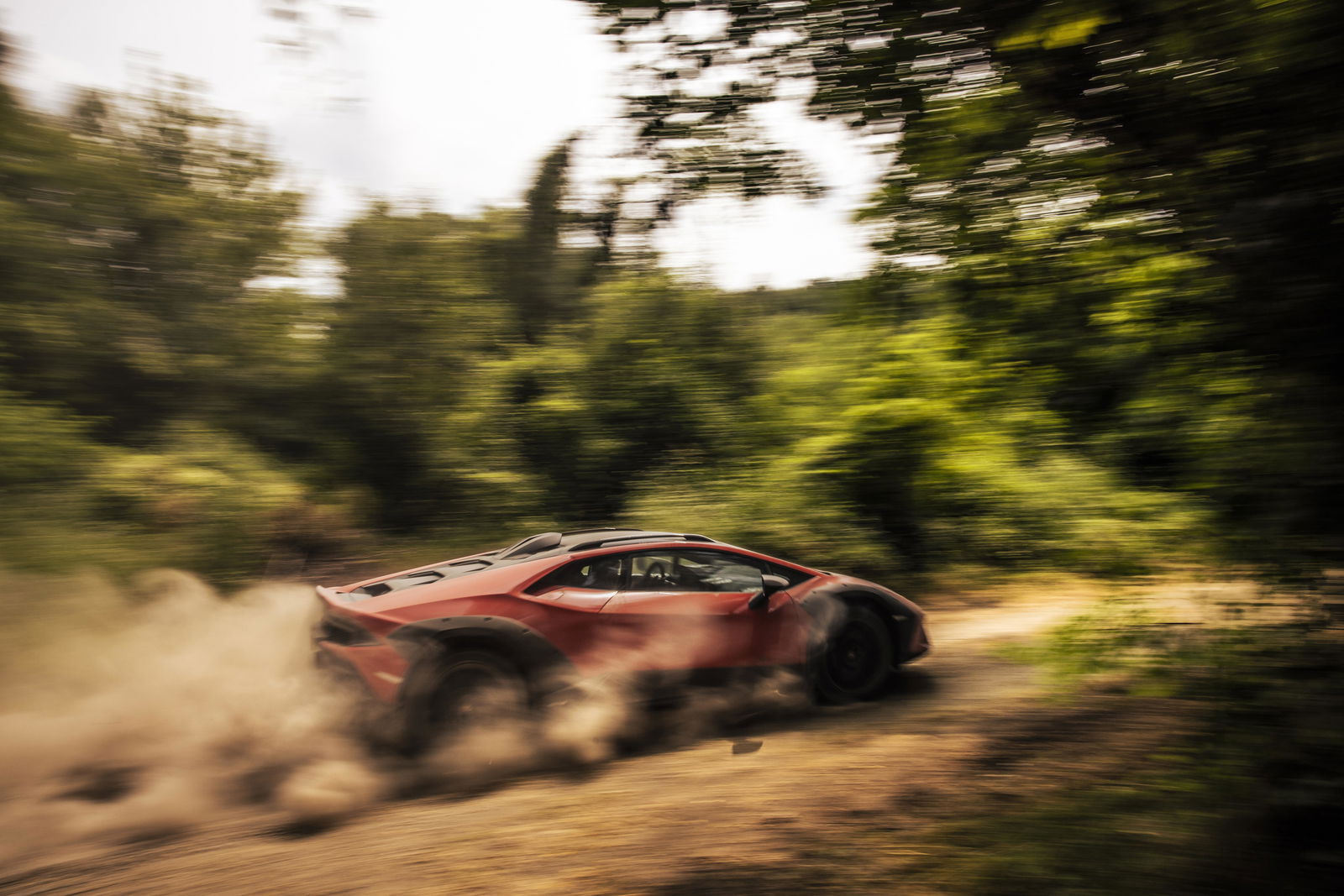
On the road or the track, is the answer. In making the Sterrato capable-ish off-road, Lamborghini has accidentally given us the best Huracan for driving on-road. The extra comfort, the fact you don’t need to feel so precious about where and how you drive it, and yes, the skid potential – it all comes together to make a supercar that’s much more enjoyable. You could buy one and never take it anywhere to make the most of the Rally mode, and I’m not sure it would matter.
This V10 entertainment does come at quite a price. £232,820, in fact, and that’s before you add options, of which there are many. This hasn’t put people off – Lamborghini extended the production run to 1,499 to cater for demand.
Given the popularity, perhaps this marks the birth of a whole new genre of supercars. With power outputs getting ever more ridiculous and the levels of mechanical grip and downforce venturing further north, it’s pleasing to see the OG supercar company trying something a bit different. Bring on the lifted supercars, I say.
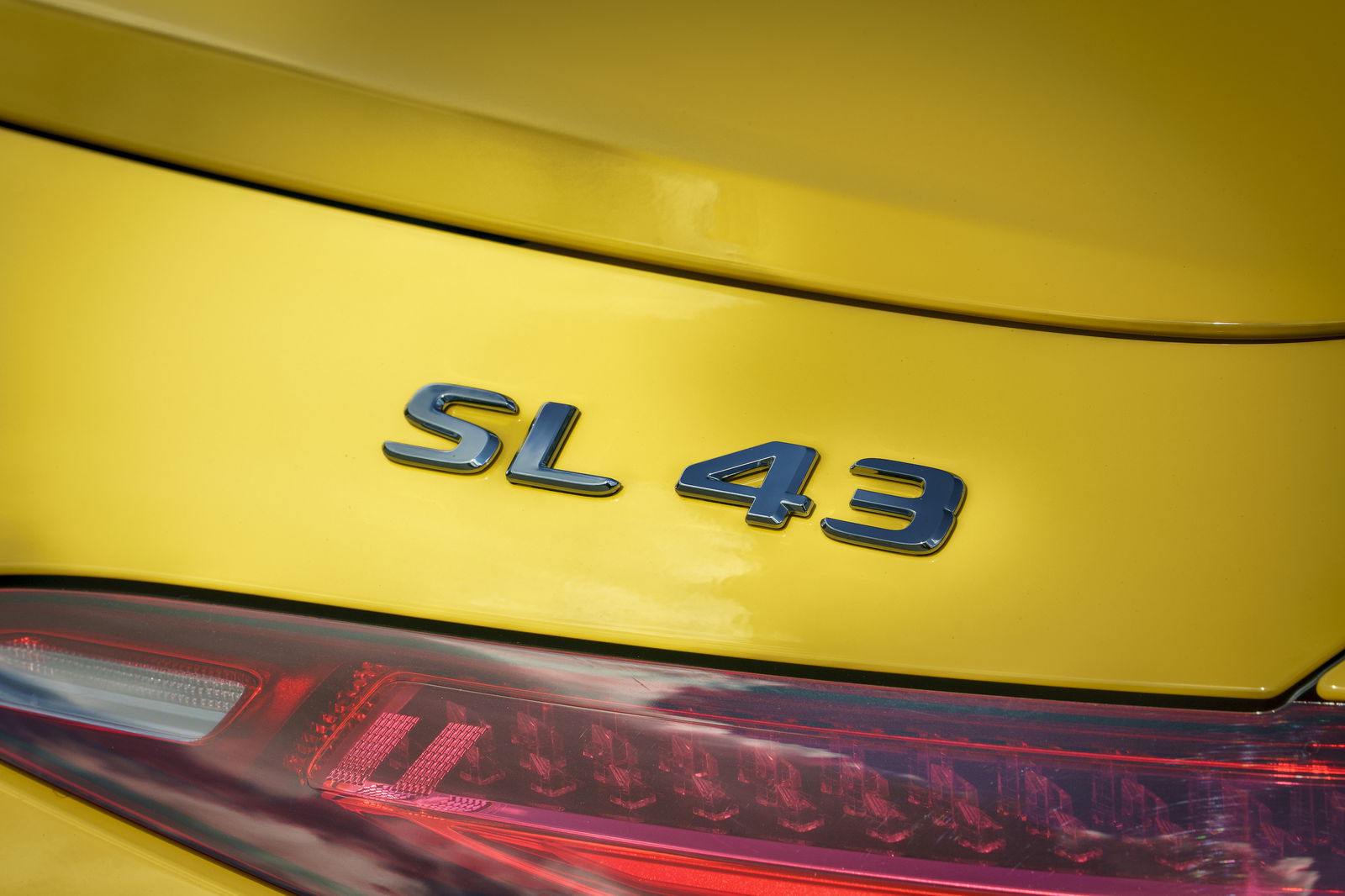


Comments